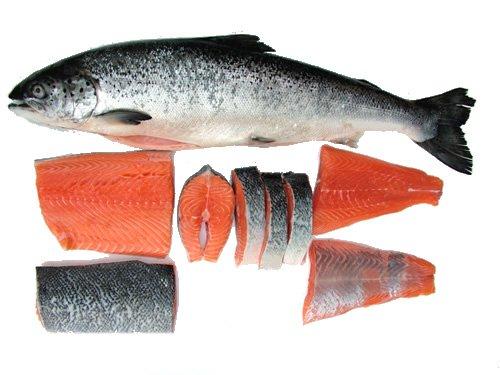Global Salmon Market Bolstered by Increasing Demand from EU
 Salmon belongs to the Salmonidae family and is used in a wide variety of food items, such as salads, burgers, pasta, etc. It is considered as a super food since it provides more proteins as compared to chicken, pork or beef, and is a rich source of omega-3 fatty acids. Salmon also offers significant amounts of zinc, iron, phosphorus, docosahexaenoic acid (DHA), eicosapentaenoic acid (EPA), and vitamin A, D and B12. Over the last few decades, continuous research and development have led to the introduction of advanced system designs, and enhanced breeding and feeding technologies which have helped in the expansion of the salmon industry. According to IMARC Group, the global salmon market sizewas estimated to be 3.6 Million Tons in 2017.
Salmon belongs to the Salmonidae family and is used in a wide variety of food items, such as salads, burgers, pasta, etc. It is considered as a super food since it provides more proteins as compared to chicken, pork or beef, and is a rich source of omega-3 fatty acids. Salmon also offers significant amounts of zinc, iron, phosphorus, docosahexaenoic acid (DHA), eicosapentaenoic acid (EPA), and vitamin A, D and B12. Over the last few decades, continuous research and development have led to the introduction of advanced system designs, and enhanced breeding and feeding technologies which have helped in the expansion of the salmon industry. According to IMARC Group, the global salmon market sizewas estimated to be 3.6 Million Tons in 2017.Numerous health benefits are catalysing the market growth
On account of the growing number of health-conscious consumers, there has been a rise in the preference for salmon as it helps in boosting brain function, lowering cholesterol and blood pressure, preventing heart diseases. It also reduces the risk of cancer, arthritis, stroke, asthma, depression, and Alzheimer’s and Crohn’s diseases. Apart from this, salmon is widely utilized in pet food, specifically cat food, in the form of deboned, whole, smoked or fresh salmon. Further, the manufacturers, particularly in the European Union, are introducing a wide variety of value-added packaged and fresh salmon products. In line with rising environmental concerns, the leading salmon producers worldwide have established the Global Salmon Initiative (GSI) which aims to improve the sustainability in the salmon farming industry. On account of these factors, the global salmon market is expected to grow at a CAGR of 3.8% during 2018-2023, reaching a volume of more than 4.5 Million Tons by 2023.
Farmed Salmon: Most popular product type
On the basis of type, the market has been segmented into farmed and wild captured salmon. Currently, farmed salmon is the most popular product type. It is provided with processed high-fat feed to produce a healthy yield. It also contains higher amount of saturated fats, Vitamin C, calories and polyunsaturated fatty acids as compared to wild salmon. However, wild salmon consists of more minerals, including zinc, iron and potassium. It depends on other aquatic organisms for its nutrition.
Source: http://bit.ly/2q6Z7cl
Post Your Ad Here
Comments